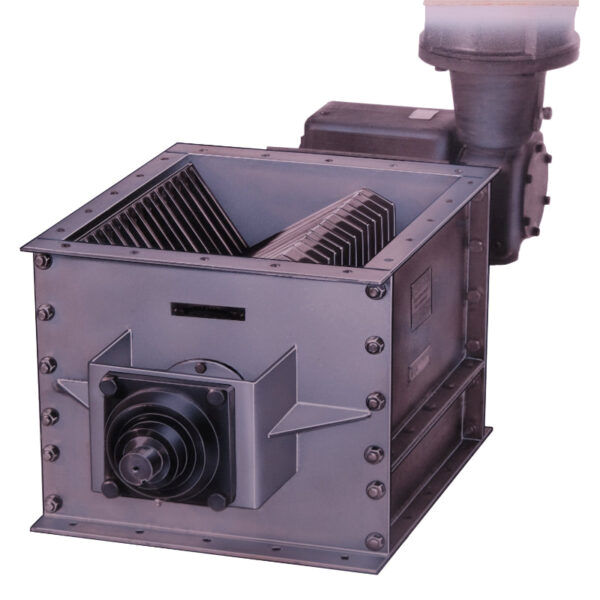Industrial lump breakers, also known as lump crushers or de-lumpers, are mechanical devices designed to break up agglomerates, lumps, or oversized particles in bulk materials, ensuring a more uniform and free-flowing product. Here's an overview of their functionality, types, and applications:
Functionality:
-
Size Reduction: They reduce the size of oversized particles or lumps that might form due to moisture, compression during storage, or chemical reactions.
-
Improve Flow: By breaking down clumps, they enhance the material's flowability, which is crucial for downstream processes like mixing, conveying, or packaging.
-
Uniformity: They help in achieving a consistent particle size, which can be important for product quality, especially in industries where uniformity affects performance or appearance.
Types of Industrial Lump Breakers:
-
Single Shaft Lump Breakers:
-
Feature one rotating shaft with blades or pins that interact with a stationary comb or screen. Suitable for applications where less aggressive breaking is needed.
-
-
Dual Shaft Lump Breakers:
-
Consist of two counter-rotating shafts with intermeshing blades or pins, providing a more intensive breaking action. These are used for tougher or larger lumps.
-
-
Rotary Lump Breakers:
-
Employ a rotating drum or cage with teeth or pins that break lumps against stationary parts or through attrition.
-
-
Blade Lump Breakers:
-
Use various types of blades to shear or chop lumps. The design can vary from simple to complex, depending on the material's characteristics.
-
-
Screw Type Lump Breakers:
-
Utilize an auger screw to push material through a screen or breaker bar, breaking lumps in the process.
-
Key Components:
-
Rotating Shafts: Equipped with blades, pins, or teeth that perform the breaking action.
-
Fixed Combs or Screens: These serve as a stationary component against which the lumps are broken or through which the material passes, ensuring size reduction.
-
Housing: Encloses the working components, often designed for easy access for maintenance.
-
Drive System: Motors and gears that provide the necessary power and speed for the breaking mechanism.
-
Inlet and Outlet: For feeding the material into the breaker and discharging the processed material.
Applications:
-
Chemical Industry: To break up lumps in powders or granules used in chemical formulations.
-
Food Processing: For sugar, flour, grains, or other food products that might lump due to moisture or storage.
-
Pharmaceuticals: Ensures uniform size of powders for tablet production or other pharmaceutical processes.
-
Mining and Minerals: For reducing the size of ore or mineral lumps before further processing or to improve material handling.
-
Cement and Building Materials: To break clumps in cement, lime, or other powders for consistent mixing or packaging.
-
Agriculture: For fertilizers, animal feeds, or soil amendments where clumping can occur.
-
Waste Management: Breaking down compacted waste or recyclables for easier processing or sorting.
Advantages:
-
Enhanced Material Flow: Prevents blockages in downstream equipment like conveyors or mixers.
-
Improved Product Consistency: Ensures that the final product or intermediate materials have a uniform size.
-
Reduced Maintenance: By breaking up lumps before they cause issues, lump breakers can reduce wear on other machinery.
-
Energy Efficiency: Can be designed to operate at low speeds with high torque, saving energy compared to high-speed crushers.
Considerations:
-
Material Characteristics: The design of the breaker must match the material's properties, like hardness, stickiness, or moisture content.
-
Capacity: Must be sized to handle the volume and lump size expected in the process.
-
Maintenance: Regular cleaning is often necessary, especially with sticky or fine materials to prevent buildup.
-
Safety: Proper guarding and safety mechanisms are required to protect operators from moving parts.
-
Customization: Many applications require tailored solutions, as off-the-shelf models might not perfectly match specific needs.
Industrial lump breakers are crucial for maintaining process efficiency in industries where material consistency and flow are paramount. They are particularly valuable in processes where material agglomeration can lead to inefficiencies or product quality issues.


